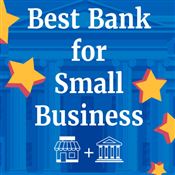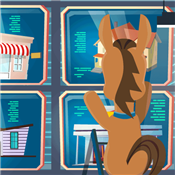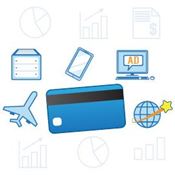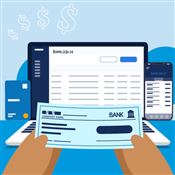Types of Small Business Loans
Whether you're starting a business or growing one, a loan can help. Which types of small business loans are right for you? Here are your options.
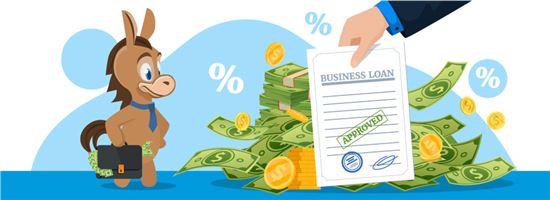 |
Gaining access to funds is a big challenge for small business owners.
Convincing lenders to give your new business money isn't easy. Even established companies face unexpected circumstances which could put them out of business.
Fortunately, many lenders and types of small business loans can help you out.
What's the best type of small business loan for you?
Read on to learn everything you need to know, including how to qualify and how much funding you could receive.
What Are the Different Types of Small Business Loans?
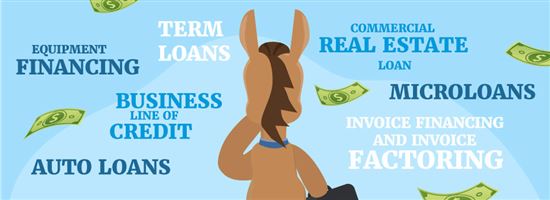 |
Different small business loans cater to different business needs.
To find a suitable one, you first need to consider what they're best used for, how much you can afford, and if you qualify.
To start, here are the 9 most common small business loans you can choose from with a few extra alternatives.
1. SBA Loans
SBA loans are loans guaranteed by the U.S. Small Business Administration (SBA). They're not the actual lender but have approved lenders they work with.
The "guarantee" means that should your business default, the SBA will pay for a percentage of the loan amount. This reduces the risks for lenders, making the loan more accessible to small businesses.
Their most common loan programs include 7(a) loans, 504 loans, microloans, and express loans.
- 7(a) Loans: This is the SBA's most common loan program. The maximum amount you can borrow is $5 million and it's typically repaid monthly with interest. You can use it for almost any purpose, such as working capital, purchasing supplies and real estate, refinancing business debt, etc.[1]
- 504 Loans: This is similar to a commercial real estate loan. The maximum amount you can borrow is $5 million, but energy projects can borrow up to $5.5 million per project.[2] You can use them for purchasing and constructing buildings or improving facilities. But you cannot use them for working capital, inventory, and debt.
How popular are SBA loans? In 2021, the SBA gave out $44.8 billion in more than 61,000 loans.[3] To receive one, you'll need good credit and the patience to make it through their more lengthy application process.
- Microloans: This is the SBA's smallest loan program, with a maximum loan amount of $50,000.[4] Nonprofit organizations usually offer them. These loans are intended to help start and expand small businesses. But you cannot use them for refinancing debt and purchasing real estate.
- Express Loans: This loan is part of their 7(a) loan program but has different terms. While SBA loan approval typically takes months, an express loan will get you a response within 36 hours.[5] It's ideal if you prefer an SBA loan but need fast cash.
Depending on your business type, you can choose from their standard express or export express loans. Varying terms for lines of credit, real estate, and other loans are available.
To help get you started, we've listed some examples of lenders offering SBA loans.
Wells Fargo, Bank of America, and First Citizens Bank have 7(a) loan options for their term loans.
| Lender | Loan Amount | Terms Available |
|---|---|---|
| Wells Fargo | Up to $5 million | Up to 25 years for commercial real estate; up to 10 years for other purposes |
| Bank of America | Up to $5 million | Up to 25 years |
| First Citizens Bank | $50,000 to $5 million | Up to 25 years for real estate; up to 10 years for other purposes |
For 504 Loans, the same banks have the following terms:
| Lender | Loan Amount | Terms Available |
|---|---|---|
| Wells Fargo | Up to $6.5 million from Wells Fargo, and up to $5 million from the CDC | Up to 25 years for commercial real estate; up to 10 years for machinery or equipment |
| Bank of America | Up to $6.5 million from Bank of America, and up to $5.5 million from CDC | Up to 25 years |
| First Citizens Bank | Up to $15 million from First Citizens Bank, while the amount from the CDC is unlisted | Up to 25 years for commercial real estate; up to 15 years for equipment |
For microloans, examples of lenders include CDC Small Business Finance, Women's Economic Ventures, and Pursuit. Keep in mind that the specific states they operate in may differ.
| Lender | Loan Amount | Terms Available |
|---|---|---|
| CDC Small Business Finance | $20,000 to $50,000 | 3 to 5 years |
| Women's Economic Ventures | $5,000 to $25,000 | Up to 5 years |
| Pursuit | $10,000 to $50,000 | Up to 6 years |
2. Term Loans
These loans are one of the most common small business loans. With it, you receive a lump sum from a lender, which you will have to repay for a set period (or term).
- Repayment: Repayment is done through installments with interest. It could be done:
- Monthly
- Bi-monthly
- Weekly
- Daily
- Monthly
- Use: Typically, you can use these for cash flow, purchasing equipment, and expanding the business.
Term loans are available as short-term, intermediate-term, or long-term loans. Generally, these vary in loan amounts and repayment periods.
- Short-term loans: These typically have a smaller loan amount with a shorter repayment period of about one to two years. You can also expect higher rates from them.
- Intermediate-term loans: These normally go up to $500,000, with a repayment period of about two to five years.
- Long-term loans: These loans can reach up to millions of dollars with a repayment period of up to 25 years. These are usually suitable for established small businesses.
You can check out OnDeck, Funding Circle, and Smartbiz for short-term, intermediate-term, and long-term loans respectively.
| Lender | Loan Amount | Terms Available |
|---|---|---|
| OnDeck (short-term loan) | $5,000 to $250,000 | Up to 24 months |
| Funding Circle (intermediate-term loan) | $25,000 to $500,000 | 6 months to 7 years |
| Smartbiz (SBA loan, long-term loan) | $30,000 to $5 million | 10 to 25 years |
3. Business Line of Credit
Your business line of credit works similarly to a business credit card. You have a maximum amount loanable to you, which you can draw and redraw as needed.
- Repayment: When you pay the initial amount that was drawn, the loanable amount replenishes. Unlike other business loans, you won't have a lump sum handed to you that you have to repay regularly.
- Use: You can use business lines of credit for almost any business need. This could be payroll, inventory, working capital, or expansion. They're not designated for a specific purpose.
There are two periods to remember when borrowing through a line of credit: a draw and repayment period.
- Draw period: This refers to the allotted time you can draw funds, typically lasting one to two years. After which, you may have to renew the loan if you still need it.
- Repayment period: The repayment period is after the draw period, where you'll have to repay the remaining funds you borrowed. This is typically paid monthly with interest.
You can get business lines of credit through traditional banks or online lenders. Some of these lenders are Fundbox, OnDeck, and Bluevine.
| Lender | Loan Amount | Terms Available |
|---|---|---|
| Fundbox | Up to $150,000 | 12 to 24 weeks |
| OnDeck | $6,000 to $100,000 | 12-month repayment term |
| Bluevine | Up to $250,000 | 6 to 12 months |
4. Microloans
As mentioned under SBA loans, these loans typically go up to $50,000. Those not guaranteed by the SBA can reach up to $100,000, which are usually for more established businesses.
Microlenders are often nonprofits and tend to rely on grants, government guarantees, and donations. Because of this, the loan amount can fluctuate.
These lenders also have a mission or a goal in mind. You'll often find them prioritizing women, people of color, or other small businesses that usually struggle to get approved for a traditional bank loan.
- Repayment: Repayment varies per lender. But they typically work similarly to a term loan. The interest rate is normally lower than other small business loans.
- Use: This could be the most suitable for starting a new business. You can use it for working capital, inventory, payroll, or purchasing equipment. Keep in mind that some microlenders may limit the use of funds.
Some popular microlenders you can check out are Accion Opportunity Fund and Kiva.
| Lender | Loan Amount | Terms Available |
|---|---|---|
| Accion - Progress Loan | $5,000 to $100,000 | 12, 24, 36, or 60 months |
| Accion - SOAR Fund | $5,000 to $100,000 | 60 months |
| Kiva | Up to $15,000 | Repayment can be up to 6 months, but can also be repaid through a lump sum |
5. Commercial Real Estate Loan
Also known as "commercial mortgage loans," these are the loans you can opt for when you plan to move to a new office or purchase a new property for your business.
- Repayment. Repayment works just like a term loan. The difference is that these loans have an amortization period in addition to a term period. The amortization period is usually longer than the term of the loan, which leads to a balloon payment at the end of the term.
- Use. You can use these as financing for the acquisition, construction, and development of buildings or facilities. However, the allowed usage will still depend on the lender of your choice.
Let's say a loan has an amortization period of 10 years with a 7-year term. You'll have to make regular monthly payments for the first 7 years. Then at the end of the term, you'll have to make a balloon payment for the remaining 3 years of the amortization. A balloon payment refers to a large payment at the end of a loan (which in this example, is the total payment for the remaining three years).
Some variations of this loan include:
- Commercial equity loan. You'll get access to the funds through a lump sum.
- Commercial equity lines of credit. You'll be given a revolving line of credit to access the funds.
Insurance companies, pension funds, and private investors lend these loans alongside traditional banks and alternative lenders.
Some examples of these lenders include TAB Bank, Wells Fargo, and U.S. Bank.
| Lender | Loan Amount | Terms Available |
|---|---|---|
| TAB Bank | Unlisted | Amortization of up to 25 years; up to 10 years of maturity date |
| Wells Fargo - Purchase Loan | $50,000 to $1 million | 5 to 20 years |
| Wells Fargo - Refinance Loan | $50,000 to $1 million (first lien) $50,000 to $500,000 (second lien) | 5 to 20 years |
| Wells Fargo - Equity Loan | $50,000 to $500,000 | 5 to 20 years |
| Wells Fargo - Equity Line of Credit | $50,000 to $500,000 | 5-year revolving credit with unlimited draws |
| U.S. Bank | Up to $10 million | 5-15 years; Amortization of up to 25 years |
6. Equipment Financing
Also known as "equipment loans," equipment financing refers to small business loans you can use for acquiring, upgrading, or replacing essential and heavy equipment.
The equipment you purchase will serve as collateral, making lenders more lenient with the requirements. In case of default, the lender will seize the equipment and liquidate it.
For these reasons, the lender may also choose not to finance equipment that could rapidly lose its value.
- Repayment. Repayment for these loans is typically made periodically with interest over a fixed term. The terms normally last the equipment's expected lifespan, which is usually up to 10 years.
- Use. These are suitable for purchasing, upgrading, or replacing essential equipment and vehicles. You can also choose from purchasing new or used equipment.
Oftentimes, equipment leasing is also an option. Lenders tend to be more lenient with leasing requirements than equipment financing.
Examples of lenders offering equipment financing (and leasing) include National Funding, Bank of America, and Taycor Financial.
| Lender | Loan Amount | Terms Available |
|---|---|---|
| National Funding | Up to $150,000 | Short-term payments available; can be up to 10+ years |
| Bank of America | From $25,000 with no maximum amount | Up to 5 years |
| Taycor Financial | Up to $400,000 | Flexible Terms (Unlisted) |
7. Invoice Financing and Invoice Factoring
Invoice financing is also known as "accounts receivable financing" or "invoice discounting." It's a cash advance you can get from a lender for your unpaid customer invoices. You can get up to 90% of the unpaid invoice amount.
Similar to equipment loans, your invoice will serve as collateral, potentially making it more accessible to small businesses.
- Repayment. Fees or rates for both are typically weekly percentages of the invoice value, which could be around 0.4% to 1%. The terms depend on how long the customers will take to pay, which can be as short as a single week or up to 6 months.
- Use. These are typically used for cash flow and payroll.
You might often see the term together with "invoice factoring," but there is a distinct difference between the two.
- Invoice financing. You still own the unpaid invoices and are responsible for collecting customer payments. This way, your customers or clients will not be aware that you've taken a loan and it's easier to retain their trust.
- Invoice factoring. You'll be selling your unpaid invoices to the lender; therefore, they will take over its collection. Some may argue that this could lead to a loss in a customer or client's trust since a different company (the lender) will be the one to contact them.
Examples of lenders include FundThrough Express, Bluevine, and Resolve.
| Lender | Loan Amount | Terms Available |
|---|---|---|
| FundThrough Express | $500 to $15,000 | 12 weekly installments |
| Bluevine Velocity Invoice Factoring | $15,000 to $10 million | 30 to 61+ days (with varying monthly fee) |
| Resolve | Up to 90% of unpaid invoices | 30, 60, 90-day net terms |
8. Merchant Cash Advance
A merchant cash advance is also known as a "business cash advance." Although it is commonly thought of as a small business loan, technically, it is not.
As the name suggests, it is a cash advance based on your debit and credit card sales volume. If you take credit card payments, this option could be a way to quickly improve cash flow.
- Repayment. You'll receive a lump sum, which you'll have to repay through a percentage of your sales. This percentage is called a holdback amount, which is around 10% - 20%. There is usually no fixed repayment term, so the more sales you have, the faster you'll be able to repay due to the percentage.
- Use. Typically, there are no restrictions on how to use the funds. You may use it for marketing, inventory, working capital, payroll, etc.
Also, instead of interest rates, merchant cash advances use factor rates or buy rates to calculate the cost of the loan. These rates normally range from 1.1 to 1.5.
For example, a loan of $10,000 with a 1.1-factor rate will equal $11,000. This is the total amount you'll have to pay back.
Credibly, Lendio, and Rapid Finance are examples of lenders for merchant cash advances.
| Lender | Loan Amount | Factor Rate |
|---|---|---|
| Credibly | Up to $400,000 | Starting at 1.09 |
| Lendio | $5,000 to $200,000 | Starting at 1.2 |
| Rapid Finance | $5,000 to $500,000 | Starting at 1.22 |
9. Auto Loans
As the name suggests, auto loans are loans for company vehicles. You can use them to purchase a car, van, or truck. You can also use them to refinance your already-owned vehicle.
The purchased vehicle is the collateral itself. This can make it more accessible for small businesses in terms of qualification.
You can also use other loans for purchasing vehicles, such as equipment loans. It's best to compare rates to get the best deal.
Aside from loans, lenders will also typically offer vehicle leasing options.
Examples of auto loan lenders include Bank of America, Capital One, and Balboa Capital.
| Lender | Loan Amount | Terms Available |
|---|---|---|
| Bank of America | From $10,000 | 48 to 72 months |
| Capital One | $10,000 to $5 million | Unlisted |
| Balboa Capital | Up to $500,000 | Flexible Terms (Unlisted) |
Alternative Small Business Loans
 |
It can be challenging to apply for loans, especially as a small business. But there are other alternatives if the ones mentioned above aren't right for your needs.
1. Loan Crowdfunding
This is also known as debt crowdfunding or peer-to-peer lending. The people, or "the crowd," lend small businesses money through various platforms.
With debt crowdfunding, lenders are not gaining company ownership. This is the opposite of equity crowdfunding, where people gain partial ownership through investing in your company.
Kiva is an example of a platform catering to small businesses through debt crowdfunding (although they are also microlenders). They lend up to $15,000 with 0% interest. Repayment can last up to 36 months.
2. Business Credit Card
Small-business credit cards typically come with a higher credit line than personal cards. They're easier for new businesses to get approval than, for example, a term loan or business line of credit.
It's an ideal option for flexibility since there is usually no limit on where to use it. For example, you can use it on capital or operation costs.
Even better, interest rates can be low for these cards. Some even have a 0% intro APR period for a certain number of months. This gives you time to pay off your balance interest-free.
Another benefit is that business credit cards often come with rewards, like cashback or travel rewards. Check out Chase. It offers some of the most popular business cards.
3. Personal Loans for Business
The struggle with business loans is that you'll typically need a good credit score and enough income to qualify. But personal loans can be an option for business purchases, especially if you're starting a new business and find it hard to qualify for a traditional business loan.
However, you'll want to ensure that your lender does not limit your personal loan to be used for business purposes. And keep in mind that when you're using a personal loan, you're putting your personal credit on the line.
As an example, Discover Personal Loans is a personal loan you can use for business purposes. You can borrow up to $15,000 with a 7-year repayment term.
4. Professional Practice Loans
If you're a small business owner practicing your profession, a small business loan may suit you. Usually, these are medical and legal firm loans.
- Medical Practice Loans. As the name suggests, these are small business loans for medical professionals such as doctors, veterinarians, dentists, etc.
- Legal Firm Loans. These are small business loans you can apply for if you're in the legal industry.
Bank of America offers different health care loan programs depending on your profession. National Funding is a lender that offers legal firm loans.
How to Qualify for a Small Business Loan?
Requirements for a small business loan will vary per lender, but you'll typically need a good credit score and at least 2 years of being in business.
Generally, they'll be looking at the following:
- Credit scores. Lenders will likely look at your personal and business credit scores to see how well you can manage debt. They will have varying criteria regarding the numbers, but ideally, you'll want at least 600 for your personal and 80 for your business credit scores.
- Annual revenue. They will also require a minimum monthly or annual revenue. Alternative options will likely have lower revenue requirements if you can't meet those from traditional banks.
- Time in the business. Most lenders will require you to have been in business for at least two years. Online or alternative lenders will likely require at least six months. During this time, you're expected to have solid business financials.
How likely are you to get funding for your small business? In 2018, the Federal Reserve found that 43% of small businesses went looking for funding and 48% of them were satisfied with the funding they received.[8]
- Industry. Some business industries are considered riskier than others. For these reasons, riskier industries will have a more challenging application. Your industry will likely be regarded as risky if you operate seasonally or engage in socially undesirable businesses, such as adult entertainment or the cannabis industry.
- Collateral or personal guarantee. Secured business loans will ask for collateral to back up the loan if your business defaults. A personal guarantee or blanket lien may be required for unsecured business loans.
- Business plan. This requirement will explain to lenders how you will use the funds and how you expect to pay them. It includes your goals and strategies, as well as company information such as management, products and services, and operations.
Which Small Business Loan is Suitable for You?
Finding the most suitable option will mean first identifying your business needs and goals. If you're starting a business, you'll have a harder time getting funding than successful established businesses.
And as a rule of thumb, the higher the convenience of getting the loan, the more expensive it may be.
Make sure you're clear on:
- What will the funds be used for
- How much of your cash flow will be used for repayment
- Is the total cost of the loan reasonable or within your expected budget
- If the rates are the best ones compared to other options
Term loans, for example, may be ideal for short-term projects or expenses. Same with business credit cards due to interest rates.
Merchant cash advances, on the other hand, are more suitable if you have ample credit and debit card sales. However, it can be the most expensive option, so you might want to keep it last on your list.
Invoice financing is a good option if your customers are wholesalers and retailers who do not have to pay immediately. The fund can help with gaps in cash flow.
If flexibility is your highest priority, then a business line of credit will do the job. Simply put, it all depends on what you prefer and need.
Business Loan Calculator
When it comes to counting the numbers, you can use a business loan calculator.
You'll be able to identify interest, monthly payments, and how much of your money goes where.
Our calculator will help you add extra payments to see what it looks like upon adjusting or shortening your payment schedule.
Frequently Asked Questions
What is the most useful type of loan for a small business?
The best small business loan for you will depend on your business goals and needs. Term loans are the most popular if you prefer to pay in installments. A revolving business line of credit may be best for flexibility.
What is the most common type of business loan?
Term loans may be the most common type of business loan. You can opt for short-term, intermediate-term, or long-term loans, and you're given the money in a lump sum. Depending on your lender, you can repay this either monthly, bi-monthly, weekly, or daily.
What are the 4 types of loans?
There are more than four types of small business loans, but the most popular ones include SBA loans, term loans, business lines of credit, and microloans. You can qualify for them from lenders such as traditional banks, credit unions, and online or alternative lenders.
The Bottom Line
There are many types of loans for small businesses. Some are more suitable for starting and growing a business, while others are for more established ones.
SBA loans are one of the most popular, and in these loans, you'll find term loans, real estate loans, and microloans from different lenders.
If you find it hard to qualify for a small business loan, you can opt for alternative options such as business credit cards.
With the number of options available, you can assess the most suitable one based on your business needs and goals.
References
- ^ U.S. Small Business Administration. What is a 7(a) loan? , Retrieved 9/9/22
- ^ U.S. Small Business Administration. What is the 504 loan program?, Retrieved 9/9/22
- ^ SBA. SBA Administrator Guzman Announces $44.8 Billion Through Signature Lending Programs, Retrieved 8/30/2022
- ^ U.S. Small Business Administration. What is a microloan?, Retrieved 9/9/22
- ^ U.S. Small Business Administration. SBA Express, Retrieved 9/9/22
- ^ U.S. Small Business Administration. Percentage of guaranty, Retrieved 9/9/22
- ^ SEC. Regulation Crowdfunding, Retrieved 8/30/2022
- ^ Federal Reserve. Small Business Credit Survey, Retrieved 8/30/2022
Write to Karen Eloriaga at feedback@creditdonkey.com. Follow us on Twitter and Facebook for our latest posts.
|
|
| ||||||
|
|
|
